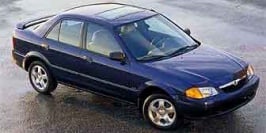- 13,244

- Seattle-ish
Chrysler J platform. Chrysler downsized their large cars just like everyone else in the late'70s, but with far less success. The J platform replaced the long-running B platform that included the original Cordoba and Charger. It was closely related to the A platform that underpinned the Volare and Aspen. In the first year, both the new Cordoba and the Mirada could be had with the fuel-sipping 225 Slant Six, as well as the 318 and 360 V8s. Demand for the 360 was negligible so it was dropped after 1980. The Imperial only came with the 318. The Cordoba LS was supposed to be a new 300 but Chrysler got cold feet and decided to call it the LS instead. They were all introduced at a time when sales of personal luxury cars were experiencing a sales slump. GM and Ford could afford to continue to update their cars and saw a strong sale rebound in the mid- to late-'80s. Chrysler was on the edge of bankruptcy so had to drop them after the 1983 model year. I think they're actually rather attractive, better looking than the GM and FoMoCo offerings of the time. They're crisp and clean and well-proportioned.

1980-1983 Dodge Mirada

1980-1983 Chrysler Cordoba

1980-1981 Chrysler Cordoba LS

1981-1983 Imperial

1980-1983 Dodge Mirada

1980-1983 Chrysler Cordoba

1980-1981 Chrysler Cordoba LS

1981-1983 Imperial
Last edited:




























